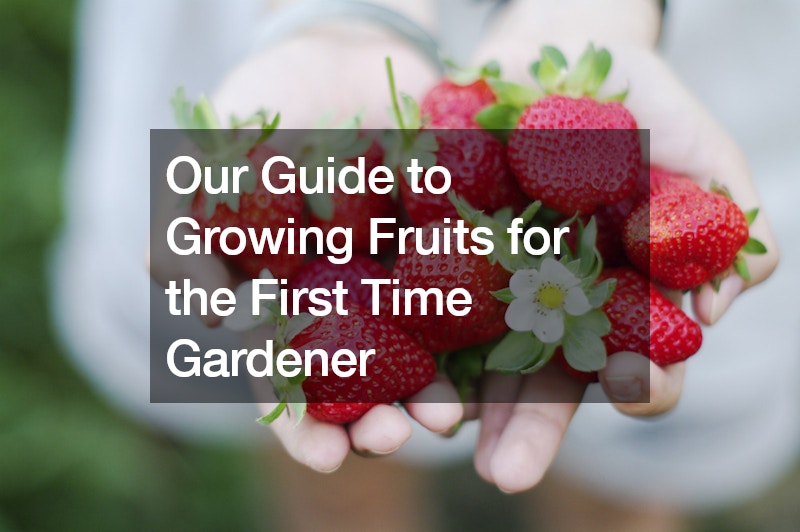Gardening is a fulfilling and enriching hobby that connects us with nature and the food we consume. For the first time gardener, starting a fruit garden can seem daunting with the multitude of choices and techniques available. However, with the right information and a little bit of planning, you can enjoy a bountiful harvest of home-grown fruits. This article aims to guide beginners through the process of selecting suitable fruit varieties, preparing your soil, and managing your garden throughout the year. From planting to harvesting, we will cover essential tips and tricks to ensure the success of your fruit garden.
Choosing the Right Fruit Varieties for Beginners
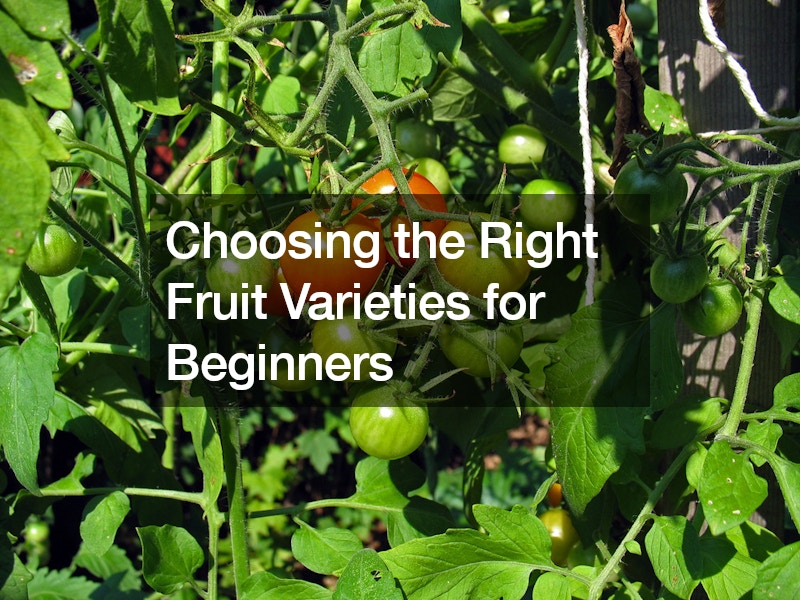
When it comes to choosing fruit varieties, the beginner gardener can feel overwhelmed by the plethora of options. To make it easier, landscape designers recommend starting with fruits that are well-suited to your local climate and soil conditions. Some good starting options include berries like strawberries and raspberries, as well as dwarf fruit trees like apple, peach, and pear trees.
Strawberries are a particularly great choice because they are hardy, require relatively low maintenance, and produce fruit quickly. Raspberries are another excellent option since they grow well in various climates and their canes can produce fruit for many years. Apples, peaches, and pears, especially dwarf varieties, are also recommended as they are easy to manage and yield a good amount of fruit in a relatively short period.
Consider consulting local landscapers for advice on the best fruit varieties for your area. They can provide insights into varieties that do well in your local conditions and help you avoid plants that are prone to pests and diseases in your region. This way, the first time gardener can make informed decisions and improve their chances of a thriving fruit garden.
Understanding Your Growing Zone
One of the critical steps in fruit gardening is understanding your growing zone. Growing zones, also known as hardiness zones, are determined by the average annual minimum temperature in your area. The USDA Plant Hardiness Zone Map is a helpful tool that gardeners can use to identify their specific zone. By knowing your zone, you can select fruit varieties that are most likely to thrive in your climate.
For a beginner gardener, it is essential to choose fruit plants that are compatible with your growing zone to ensure they can withstand local temperature extremes. Hardscape companies often emphasize incorporating plants that suit your growing conditions to avoid the disappointment of failed crops. It’s a valuable piece of advice that can save you time, effort, and investment in your gardening journey.
Certain fruit plants are very specific about their growing conditions, and consulting with local experts can be incredibly beneficial. The first time gardener should reach out to local tree services or agricultural extension offices for guidance. They can provide tailored advice based on your local climate, helping you select the best fruit varieties for successful growth.
Preparing Your Garden Soil for Fruit Plants
Before planting, it’s crucial to prepare your garden soil to support healthy fruit growth. Good soil preparation involves ensuring the soil has the right texture, pH, and nutrients to support your plants. For the beginner gardener, testing your soil’s pH level is a fundamental step. Most fruit plants require a pH between 6.0 and 7.5 to thrive.
Local landscapers often recommend amending your soil with organic matter such as compost or aged manure to improve its structure and fertility. Organic matter helps the soil retain moisture and nutrients that are vital for the growth of your fruit plants. It also boosts microbial activity, which aids in the breakdown of organic materials, further enriching the soil and enhancing root health.
If your soil is clay-heavy, it may benefit from the addition of sand or peat moss to improve drainage and prevent waterlogging. Conversely, sandy soils often require more organic matter to enhance moisture retention and nutrient absorption. The first-time gardener should also consider using a balanced, slow-release fertilizer during soil preparation to ensure that fruit plants have access to essential nutrients soon after planting. Additionally, incorporating mulch around your plants can help maintain consistent soil moisture levels and suppress weeds.
Planning Your Fruit Garden Layout
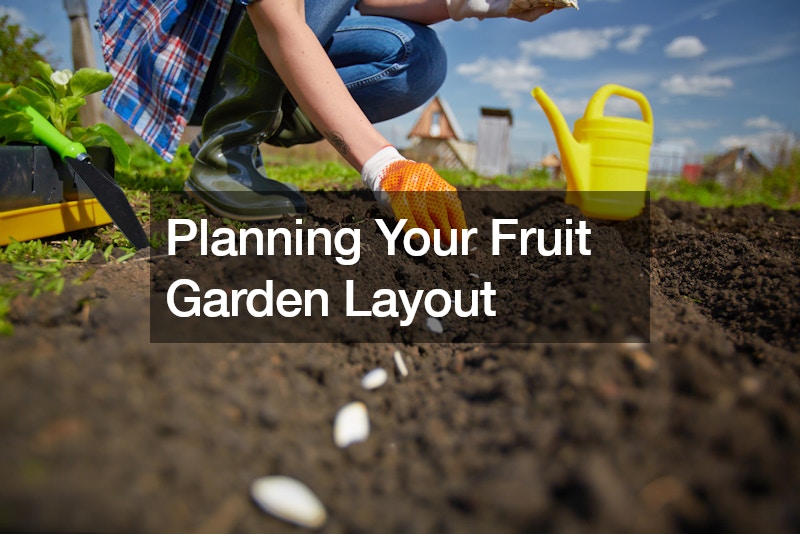
Planning your fruit garden layout is another important step that the beginner gardener should not overlook. Start by assessing your available space and sunlight exposure, as most fruit plants need at least 6-8 hours of full sun each day to produce well. A hardscape company can help you map out where each of your fruit plants will go based on their growth habits and space requirements.
Lawn irrigation repairs may be necessary to ensure that your garden has an adequate water supply. You can integrate a drip irrigation system or use flexible water hoses to make watering more efficient. Proper water management is crucial as both over-watering and under-watering can adversely affect fruit plant health.
Creating a planting schedule will help the first time gardener stay organized and keep track of when each variety should be planted, pruned, and harvested. This timing is essential for maximizing your garden’s productivity and ensuring healthy plant growth. Keep in mind that some fruit plants need cross-pollination, so planting compatible varieties close together can improve fruit set.
Planting Fruit Trees and Bushes
When it comes time to plant your fruit trees and bushes, proper planting techniques are key to establishing healthy plants. The beginner gardener should choose a clear, sunny day to transplant seedlings or young trees to minimize transplant shock and ensure optimal growth conditions. Dig holes larger than the root ball to give roots ample space to spread out and develop effectively.
Tree companies often advise planting at the same depth that the trees or bushes were growing in their nursery containers. This helps the plants acclimate more quickly to their new environment and promotes strong root establishment. After placing the plants in the holes, backfill with soil and gently firm it down, ensuring there are no air pockets around the roots.
Water the newly planted fruit trees and bushes thoroughly to help settle the soil around the roots and provide immediate hydration. For the first-time gardener, it’s essential to avoid overwatering at this stage, as excess water can lead to root rot and other issues. Mulching around the base of your fruit plants can help retain moisture, regulate soil temperature, and reduce weed competition. Adding a layer of mulch also prevents soil erosion and supports long-term plant health.
Watering Techniques for Fruit Plants
Adequate watering is crucial for the success of your fruit garden. The beginner gardener should understand that the needs of fruit plants vary with species, weather conditions, and soil type. Generally, fruit plants need deep, infrequent watering that encourages roots to grow deeper into the soil, enhancing drought resistance.
Using flexible water hoses can make the watering process more manageable and efficient. These hoses are easy to maneuver around your garden, allowing you to direct water precisely where it is needed. Drip irrigation systems are another excellent option as they deliver water directly to the plant roots, reducing water wastage and controlling soil moisture levels more effectively.
To avoid fungal diseases, water your fruit plants early in the morning so that the foliage has time to dry throughout the day. The first time gardener should regularly check the soil moisture level to ensure that the plants are receiving adequate water. Be mindful of rainfall and adjust your watering schedule accordingly to prevent waterlogging.
Fertilizing Your Fruit Plants
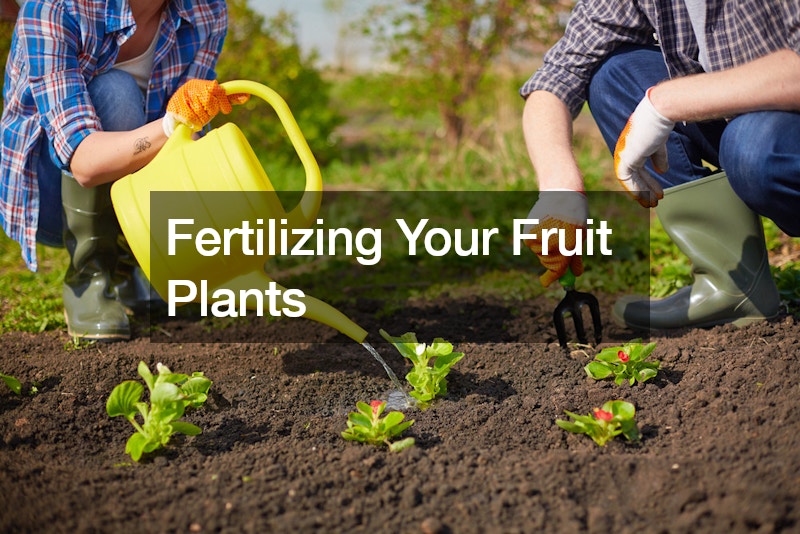
Fertilizing is a critical step in ensuring the growth and productivity of your fruit plants. For a beginner gardener, understanding the nutrient requirements of different fruit plants can be complex but manageable with a bit of guidance. A balanced lawn fertilizer service can provide the essential nutrients—nitrogen, phosphorus, and potassium—that fruit plants need for robust growth.
It’s recommended to use a slow-release fertilizer that feeds the plants over a more extended period, reducing the risk of nutrient leaching. Always follow the manufacturer’s instructions regarding the application rate and timing. Over-fertilization can lead to excessive vegetative growth at the expense of fruit production, so it’s crucial to apply the right amount.
The first time gardener should also consider periodic soil testing to monitor nutrient levels and adjust fertilizer applications accordingly. Consulting with fertilizing contractors can provide more specialized advice tailored to your garden’s specific needs. They can help you develop a fertilizing schedule that ensures your fruit plants have all the nutrients they need for optimal growth.
Pruning and Training Fruit Plants
Pruning and training your fruit plants are essential practices for promoting healthy growth and maximizing fruit production. The beginner gardener should understand that pruning involves removing dead or diseased branches, thinning out crowded growth, and shaping the plant to improve sunlight penetration and air circulation.
Fertilizing contractors often emphasize the importance of pruning at the right time. For example, most fruit trees are pruned in late winter or early spring before new growth begins. Berry bushes may need summer pruning after harvest to maintain their structure and vigor. Proper training techniques, such as espalier for apple and pear trees, can also enhance fruit production and aesthetic appeal.
Consult guides specific to your fruit varieties to learn the best methods for pruning and training. The first time gardener can benefit greatly from demonstrations, either through local gardening workshops or online tutorials. Regular pruning and training will ensure that your plants remain healthy and productive over the years.
Managing Pests and Diseases
Managing pests and diseases is a vital part of maintaining a healthy fruit garden. A beginner gardener should adopt an integrated pest management (IPM) approach, which combines cultural, biological, and, if necessary, chemical methods to control pest populations and minimize damage to your plants.
Regularly inspecting your plants for signs of pests and diseases can help catch issues early before they become severe. Look for discolored leaves, unusual spots, or insects on your fruit plants. Local tree services can assist with identifying specific pests and diseases common in your area and recommend control measures.
Using natural predators, such as ladybugs, to control aphids or introducing beneficial nematodes to manage soil-dwelling pests can be effective and environmentally friendly. The first time gardener should also maintain good garden hygiene by removing fallen leaves and fruits, as these can harbor pests and diseases. If chemical treatments are necessary, always use them as a last resort and follow label instructions carefully.
Harvesting Your Fruits at the Right Time
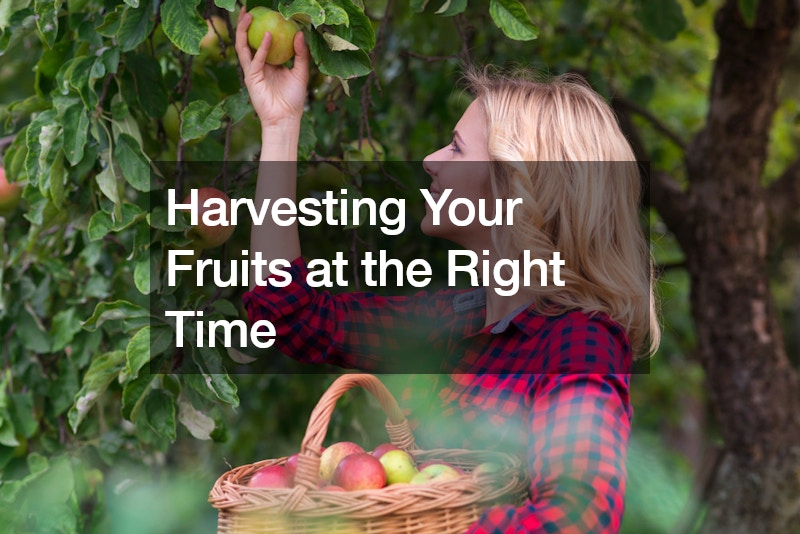
Harvesting your fruit at the right time is crucial for enjoying the best flavor and nutrition. The first time gardener should research the specific harvest times for each fruit variety they are growing. Generally, fruits are ready to harvest when they reach full color, have a pleasant aroma, and begin to soften slightly.
Tree removal services can sometimes be necessary if you have older, unproductive trees that can spread diseases to your healthy plants. Once your fruit plants reach maturity, knowing the proper techniques for harvesting is essential. For most tree fruits, a gentle twist, lift, and snap motion will detach the fruit without damaging the plant.
It’s also vital to handle the harvested fruits carefully to avoid bruising, which can lead to spoilage. The first time gardener should harvest fruits regularly to encourage more production and prevent over-ripening on the plant. Enjoying the fruits of your labor is one of the most rewarding aspects of gardening, providing delicious, home-grown produce for you and your family.
Starting a fruit garden can be a rewarding endeavor for the a gardener, providing fresh, home-grown produce and a deeper connection with nature. By choosing the right fruit varieties, understanding your growing zone, and preparing your garden soil, you lay a strong foundation for success. Proper planning, planting, watering, fertilizing, and pruning techniques ensure your fruit plants thrive and produce abundant harvests. Regular attention to pest and disease management, coupled with timely harvesting, helps maintain the health and productivity of your garden. With patience and dedication, the first time gardener can transform their outdoor space into a fruitful oasis. Remember, the journey of growing your fruit garden is as rewarding as the delicious outcomes you will enjoy. Happy gardening!

